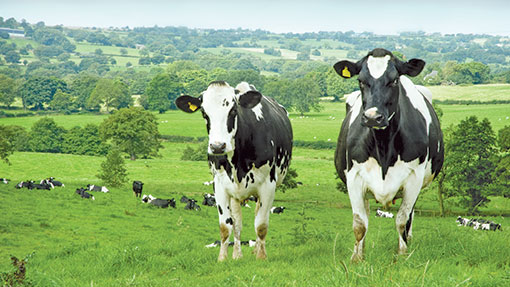Livestock Event 2014: How CAP reform will affect UK livestock farmers

With just months to go until the new CAP regime is in place, Caroline Stocks looks at what it could mean for livestock farmers.
The reform of the Common Agricultural Policy (CAP) is reaching its final stages, and with less than six months before the new regulations are in place across Europe, there are still details to resolve.
It has been an arduous process by any imagination. Two years of negotiations saw hundreds of rules and negotiations written into the policy in a bid to make it more “common” and fair to both Europe’s farmers and taxpayers.
Across the UK, governments have to decide how the new regime will be put into place. Their final decision about how direct payments will be allocated must be submitted to the European Commission by 1 August. It is proving a lengthy process, with finer details of the reform’s implementation still to be agreed as this guide went to press (12 June).
See also CAP reform – a guide for livestock farmers
Even these final stages have proved to be areas of contention, with many farmers left frustrated by both the reform’s outcomes and the time it has taken for the detail to emerge.
The budget
The UK’s direct payment budget of €25.1bn (£20.4bn) has been split between England, Scotland, Wales and Northern Ireland.
The allocations are based on a historical formula that broadly reflects agricultural output across the UK. The split has resulted in a cut to the direct payment budget of 1.6% across all parts of the UK.
UK ministers also had to decide whether to add additional cuts of up to 15% of the budget by transferring funds from Pillar 1 (direct payments) to the rural development Pillar 2.
DEFRA chose to transfer 12%, with the option to review the percentage once the new regime had been in place for two years. In Scotland, ministers opted for 9.5%, while a High Court ruling meant that Northern Ireland’s rate was set at 0%. Only the Welsh government decided to use the maximum 15%.
Move to a flat rate
Flat-rate payments were introduced in England in 2005, but the latest reforms mean that Scotland, Wales and Northern Ireland now have to move away from historic payments to a flat-rate system.
While Wales’ government has decided to make payments more uniform across moorland, lowland and disadvantaged areas, farmers in Scotland and Northern Ireland were still waiting for more detail.
Capping payments
Under EC proposals, a reduction of 5% must be applied to all direct payments above €150,000 (£122,000), with an option to increase the reduction to 100%.
In England, ministers decided to take a minimum approach, with farmers who receive a basic payment above €150,000 having their payments reduced by 5%.
In Wales, capping will be introduced on a sliding scale, starting with amounts of €150,000 being reduced by 15%, while payments of €300,000 (£244,000) will be capped at 100%. Scotland and Northern Ireland’s farmers were still waiting a decision from their ministers.
Greening rules
Under the reforms, farmers will have to follow new environmental regulations, known as greening, to unlock 30% of their direct payments.
If a livestock producer predominantly farms grassland, has less than 30ha of arable crops, or they are certified organic, they will be exempt from the rules.
But mixed farms and enterprises that grown their own feed across large cropping areas will have to start planning how the rule changes will affect them.
Retaining environmentally-sensitive grasslands
The percentage of permanent grassland compared with the total farmed area must not fall by more than 5%.
If the ratio decreases, farmers who have ploughed permanent grassland (defined as grassland that has not been part of an arable rotation in the previous five years) may be forced to reinstate it. Governments can also put restrictions on any further permanent grassland being ploughed.
Ecological focus areas
Farmers with more than 15ha of arable land who are not exempt will have to put 5% of their land into an Ecological Focus Area (EFA).
UK governments had not decided what counted as an EFA (as of 12 June), but the NFU was pushing DEFRA to include hedges and ditches as well as nitrogen-fixing crops, short rotation coppice and cover crops.
“The threat is that without the widest range of EFA, farmers will be forced to take productive land out of production,” says Gail Soutar, NFU senior CAP adviser. “This will have a negative impact on food production.”
Crop diversification
Under crop diversification rules, livestock and dairy farmers will more than 30ha of home-grown cereals will have to grow at least three different crops on their arable land.
The European definition of a crop is wide enough to ensure wheat, barley, oats and oilseed rape are different crops. Winter and spring varieties will also be differentiated.
Ms Soutar says thousands of farmers will be forced to change their current cropping regimes to comply.
“Crop diversification differs from crop rotation as the greening requirements are part of an annual scheme,” she says. “Therefore the requirements relate to what happens in the claim year, as opposed to over the duration of past or future years.”
The government estimated about 4,000 farmers in England and about 800 in Scotland would have to change their current cropping regimes, but the NFU thinks even more could be effected.
Find out more on CAP by visiting the business debates (BM177), with a dedicated CAP reform seminar at 12.20pm on both days.
See also: All the news from the Livestock Event
